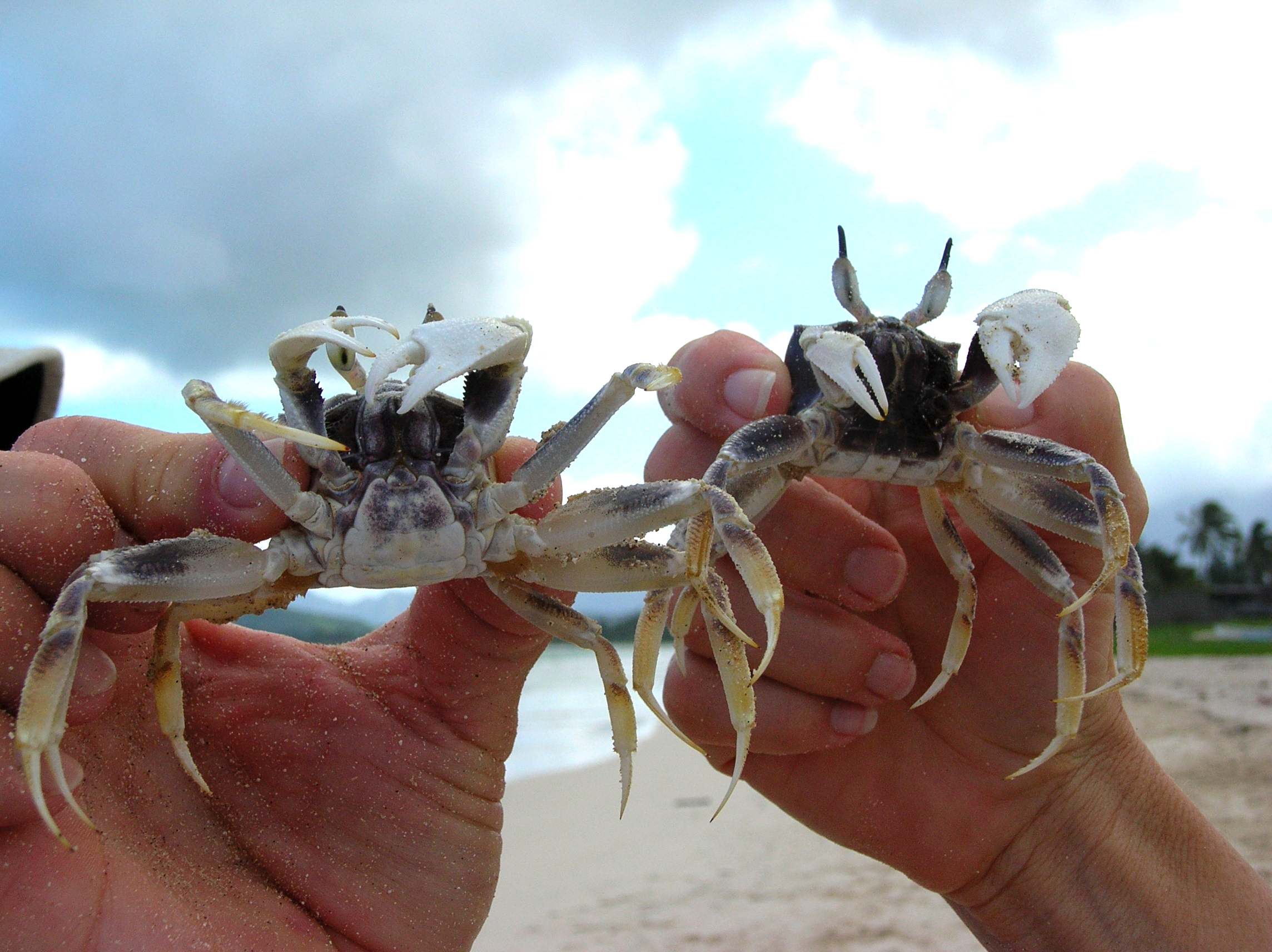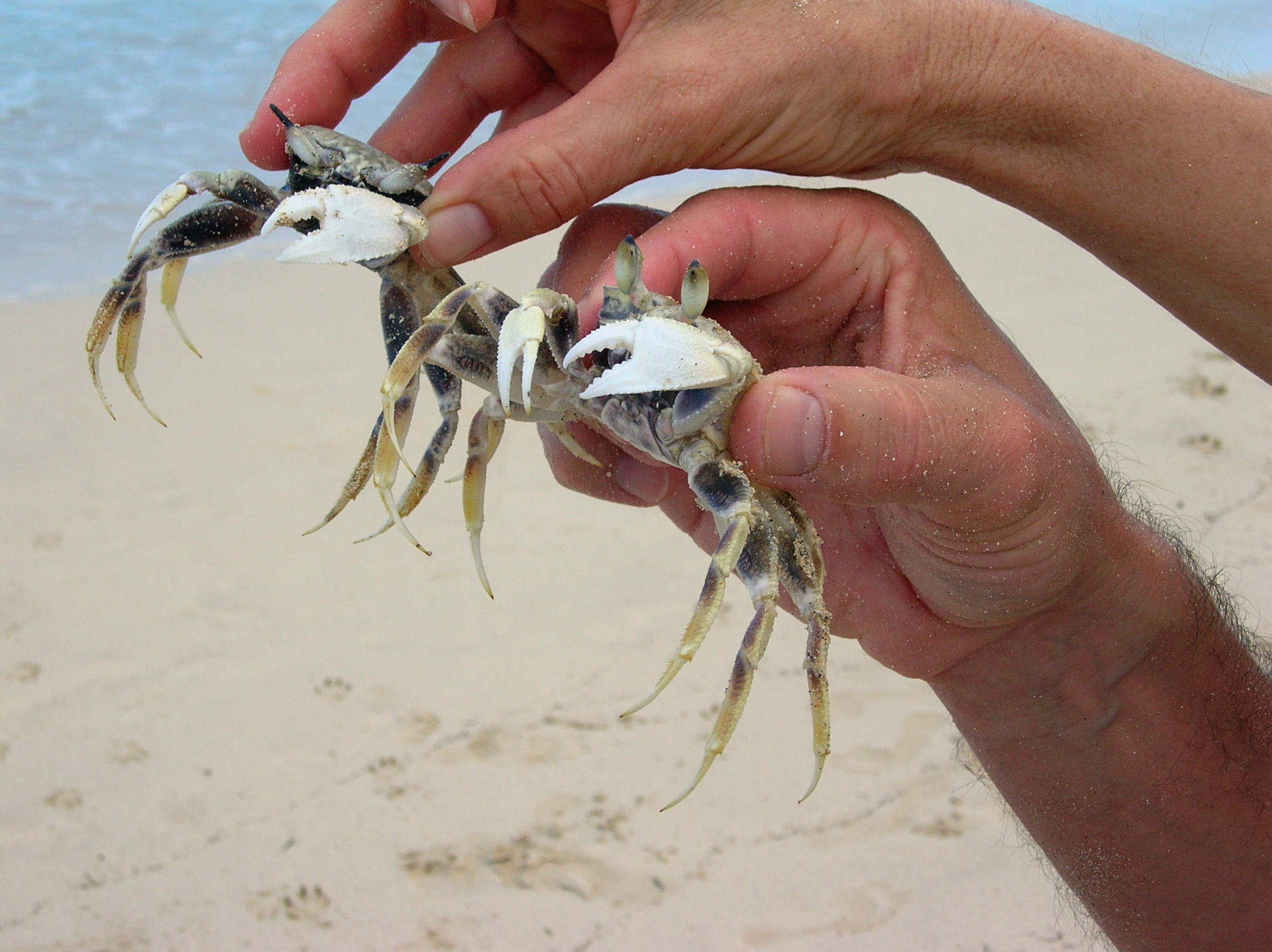Published in the Ocean Watch column, Honolulu Star-Advertiser © Susan Scott
February 29, 2008
I’ve written in this column and two books that a person can tell male from female ghost crabs by the shape of the sand piles next to their holes.
This information came from a 1970s Ph.D. thesis I found years ago at the University of Hawaii’s graduate library.
It was a good theory — in its time. Researchers now know that the two kinds of sand piles we see on Hawaii’s beaches come from two kinds of crabs: the horn-eyed ghost crab and the pallid ghost crab.
In Hawaii both species are also called sand crabs, or ohiki.
The horn-eyed crab is the most numerous and the larger of the two. Horn-eyed crabs grow to about 3 inches across. Their name comes from their long, pointed eyes which rise from their heads like horns.


Ghost Crabs -Kailua Beach -Courtesy of David Hubbard – click photo for larger view
This species uses its large front claw like a shovel. When digging, the crab picks up a claw full of sand, carries it a few inches from the hole and piles it in the shape of a cone.
Hawaii’s other species, the pallid ghost crab, has round-topped eyes and grows to about an inch across. When pallid crabs excavate their holes, they stay in the opening and throw the sand out in the fan shape.
It’s likely that males, females and juveniles of the same species dig in the same way, each discarding their sand in the shapes of their own kind.
The pallid ghost crab lives higher on the beach than the horn-eyed. On early morning walks, it’s common to see a line of fresh horn-eyed holes accompanied by cones of damp sand. Farther from the water are the pallid crabs’ smaller holes marked by fans of sand.
We don’t often see the crabs themselves because they’re nocturnal. During the day the crabs seal their holes from the inside and hunker down inside where it’s cool and moist. At dusk the crabs emerge to eat, mate and dig new holes.
Female crabs carry their eggs in a wide flap on the underside of the shell. After the male fertilizes the eggs, the female drops them into the ocean.
Ghost crabs breathe air, but they do it with gills that must stay moist to function. At night the crabs run to the surf line to dip their gills in the water. In the daytime the crabs keep their gills wet by wicking water to them via fine hairs on the walking legs.
Ghost crabs are omnivores, eating almost anything that washes their way. But they are also predators, eating mole crabs and other beach invertebrates. And given the opportunity, ghost crabs will chase, catch and eat sea turtle hatchlings.
Mature horn-eyed crabs are fast, running up to 5 mph. They attain this high speed by leaping through the air as they step.
These versatile crabs also change color to match their backgrounds. The ghost crabs on Hawaii’s black-sand beaches are black.
I was reading about ghost crabs this week because I found a large, horn-eyed crab lying on its back on the beach. When I picked it up, it struck me that with those weird eyes, 10 legs and armored body, this Hawaii native could be a model for a sci-fi movie.
I’m not the only one with such space-creature ideas. One author in 1940 described the Atlantic ghost crab, a close relative, as “an occult, secretive alien from the ancient depths of the sea.”
Biologists have learned a lot about ghost crabs since then, and now I have, too. My morning beach walks just got better.